This third part of the series on trust in the media takes a look at which groups in Canada have been most likely to gain or lose trust over the past few years.
(This series began with a discussion of how much trust Canadians have in the media, followed by a look at how trust in the media compares to trust in other institutions, as well as trends over time.)
Let’s look at differences by region, federal vote intention and age, starting with the question about trust in the mass media.
The pattern of regional differences should be familiar to readers of this Substack. You guessed it: over time, trust is trending downwards in Alberta, but upwards in Quebec.
At the start of the period covered by this series of surveys, Albertans and Quebecers were equally likely to say they trusted the media (grouping together responses between 5 and 7 on the 7-point scale). Since then, trust in Alberta has declined by nine percentage points, but risen by 10 points in Quebec – so there’s now a 19-point gap. Most of the change in Alberta occurred between 2021 and 2023.
Perhaps not surprisingly, the supporters of the different federal parties have also been trending in opposite directions (note that the vote intention question is not asked in every survey year). Liberal Party supporters have tended to be more likely than Conservative supporters to express trust in the media, but the gap widened after the 2014 survey (which probably means after the 2015 election), as trust among Liberal supporters increased. And then, as in Alberta, trust in the media among Conservative Party supporters declined in the most recent period, between 2021 and 2023.
The last trend might be a bit more surprising. Older Canadians used to be more likely to trust the mass media than their younger counterparts. But this gap first narrowed, then disappeared. Canadians age 60 and older are just as likely to trust the mass media today as they were in 2010; but trust among Canadians age 18 to 29 is up by 14 points.
Before we make too much of this, let’s compare these three trends to the ones we find from the second survey question, which asks about confidence in journalists. This question comes from a survey with a longer, but less regular, time series.
The results by region and federal vote intention are broadly similar. First, Albertans previously were more likely than Quebecers to have confidence in journalists, but are now less so.
Second, confidence in journalists has tended to hold steady among Liberal Party and NDP supporters, but has declined significantly among Conservative Party supporters.
In this case, however, there is no sign of confidence increasing among the youngest age group – in fact, it is lower today than was previously the case. But notice that the results for 18 to 29 year-olds are not really that peculiar – results are similar for everyone age 45 and under. In fact, in the most recent survey, everyone under the age of 60 is just about as likely to say they have confidence in journalists; the outliers are those age 60 and older.
Here’s the summary. Last time, we saw that trust in the mass media (or confidence in journalists) has arced up and down over time, but has not been steadily declining. To that we can now add the observation that Canadians living in different regions, with different political preferences, or from difference age groups do not all follow the same patterns.
Over time, Quebecers have tended to become more likely to trust the media, and Albertans less likely to do so. And similarly, trust has held steady (or even increased) among supporters of the federal Liberal Party, but declined recently among Conservative Party supporters. Whether these two trends are “locked in,” or will reverse once the political winds from Ottawa start blowing in a different direction, remains to be seen.
The results for age groups are harder to summarize – the patterns from the two surveys don’t align, which isn’t surprising given the different question wording, response scales and survey years (it is not necessarily surprising that younger and older people might respond differently when asked about the “mass media” rather than “journalists”). At a minimum, though, we can say that the youngest group of Canadian adults don’t appear to be the outlier. One survey shows the age groups currently clustering together, while the other shows the same pattern – with the exception of those age 60 and older. In either case, young people today don’t stand out as having much lower trust than average.
The most recent results in the post are from the AmericasBarometer and Confederation of Tomorrow surveys. You can see more detailed reports on the questions from these surveys (as well and information on how the surveys were conducted) on our website here and here.
What is the Environics Institute for Survey Research? Find out by clicking here.
Follow us on other platforms:
· Twitter: @Environics_Inst or @parkinac
· Instagram and Threads: environics.institute


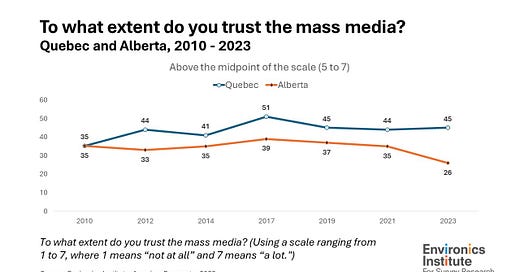



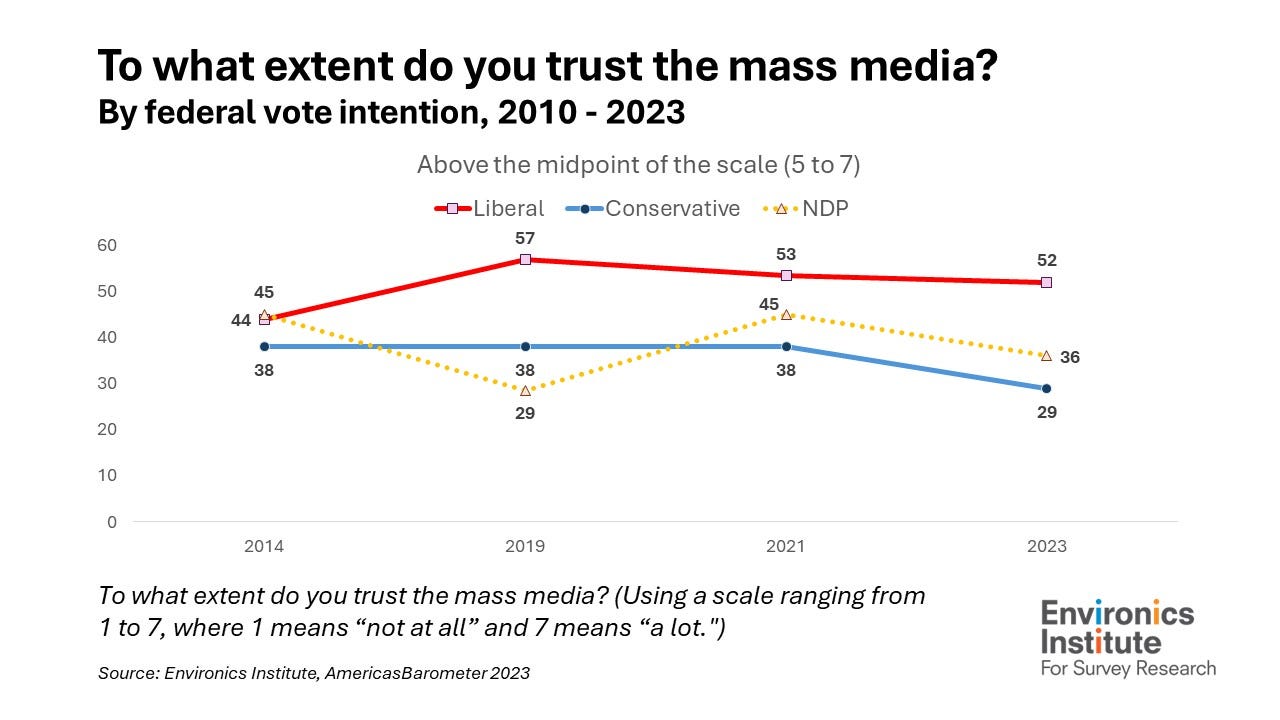
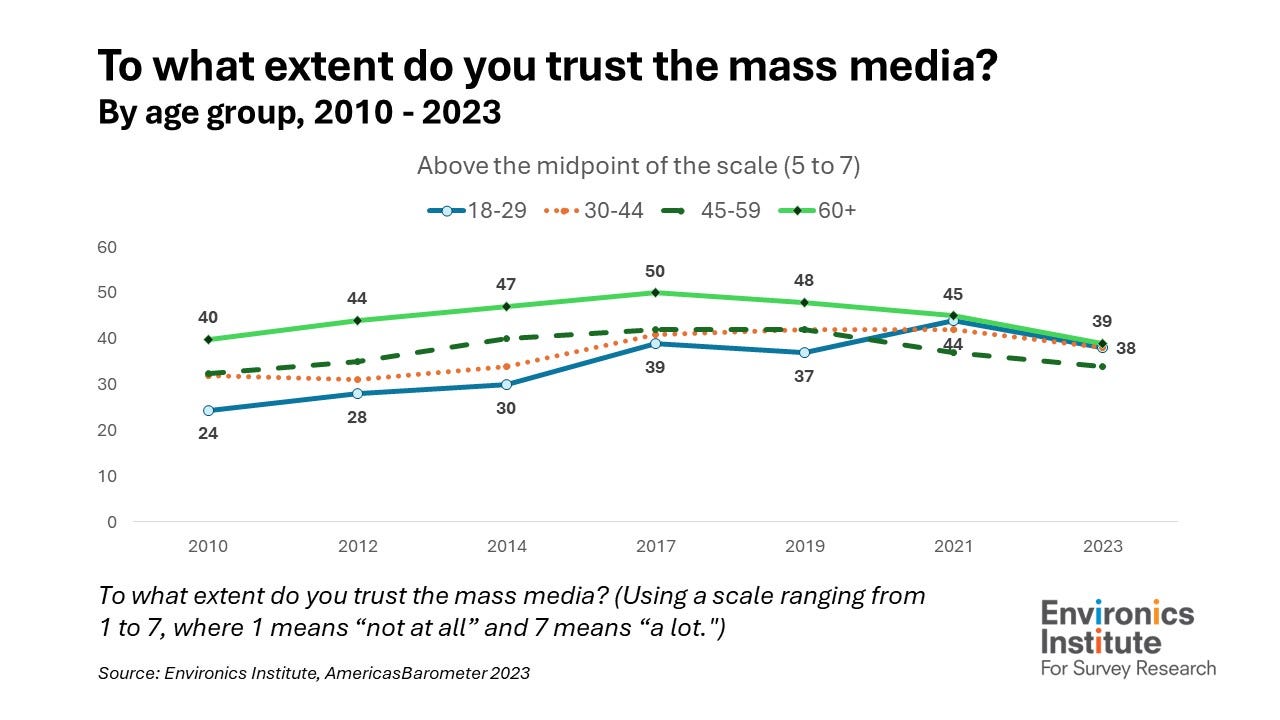
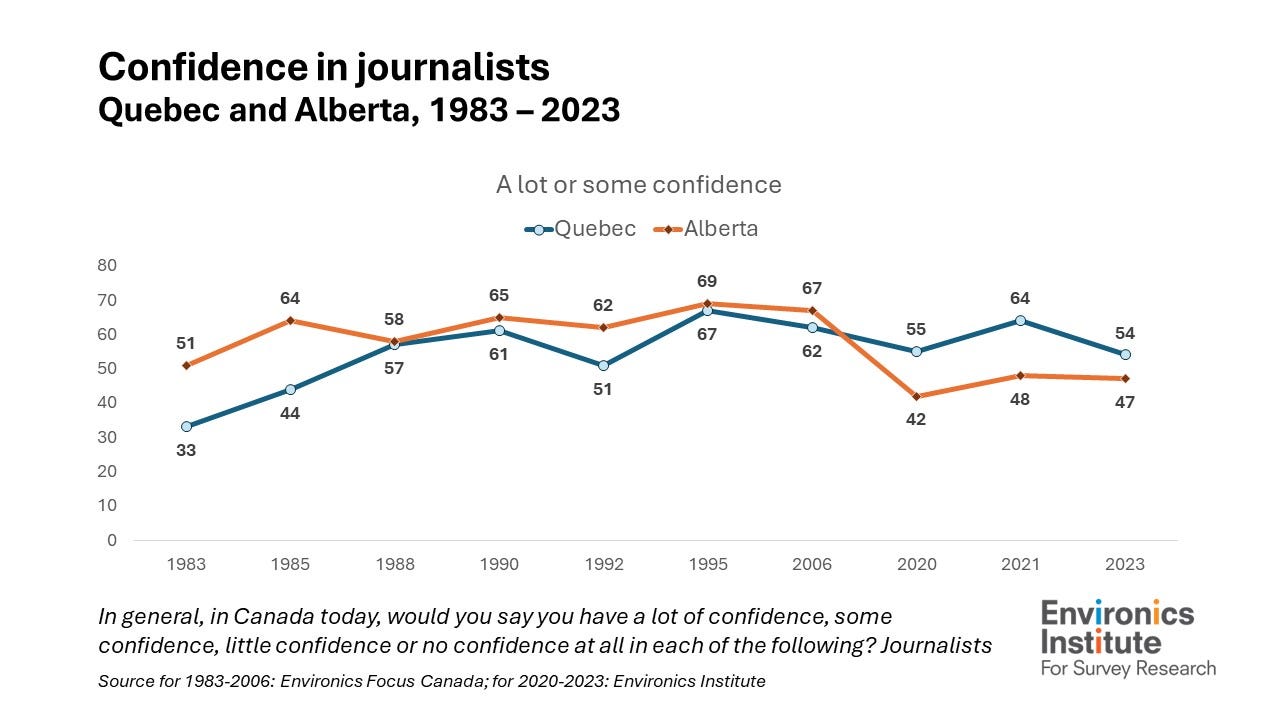

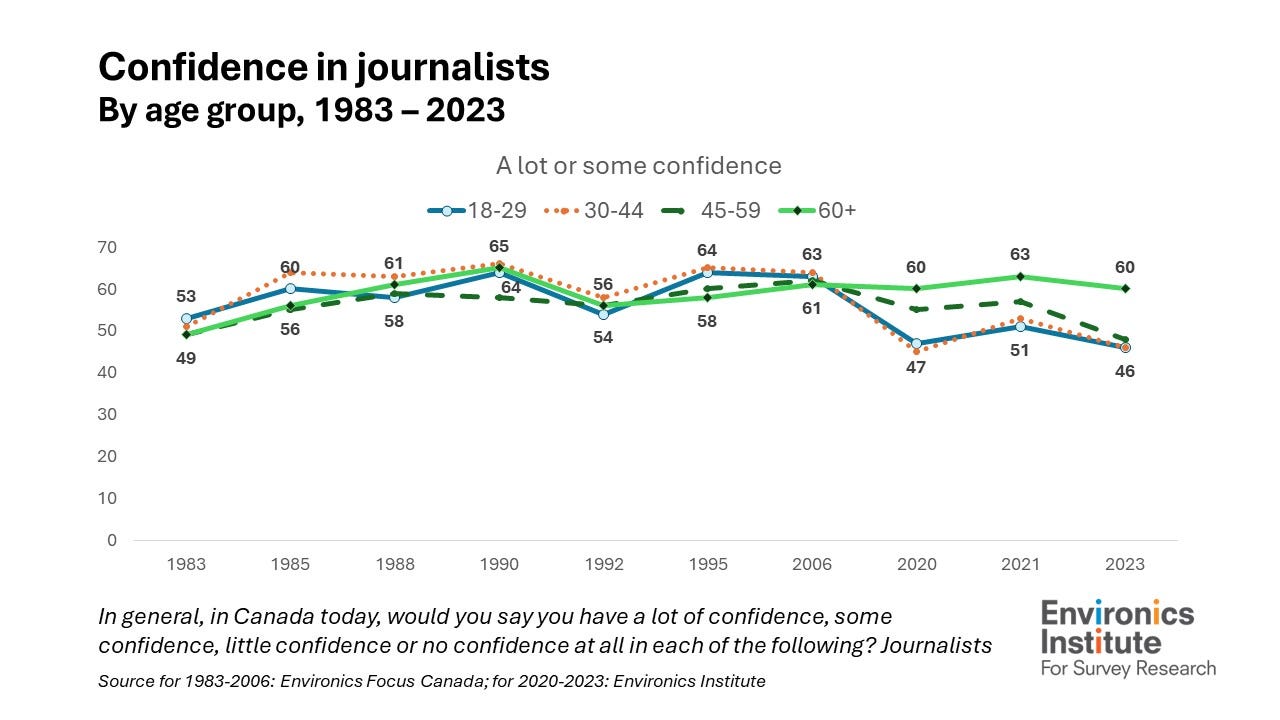
Enjoying the series. Regional and partisan differences not that surprising but similarity among age groups particularly interesting.